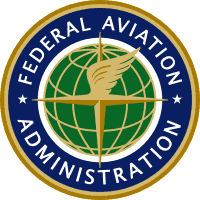Congress, Trump Administration Must Prioritize Air Traffic Control Reform

 Earlier this year, an effort to usher in badly needed air traffic control reform spearheaded by House Transportation and Infrastructure Committee Chairman Bill Shuster died before reaching a floor vote. The idea, widely supported by aviation researchers, is modeled on Canada’s successful reforms from two decades ago. In a nutshell, air traffic control is removed from the government agency and spun off into an independent, nongovernmental nonprofit. The nonprofit corporation would be governed by a board of stakeholders and would charge user fees, which would replace the aviation taxes currently collected by the government agency.
Earlier this year, an effort to usher in badly needed air traffic control reform spearheaded by House Transportation and Infrastructure Committee Chairman Bill Shuster died before reaching a floor vote. The idea, widely supported by aviation researchers, is modeled on Canada’s successful reforms from two decades ago. In a nutshell, air traffic control is removed from the government agency and spun off into an independent, nongovernmental nonprofit. The nonprofit corporation would be governed by a board of stakeholders and would charge user fees, which would replace the aviation taxes currently collected by the government agency.
Nav Canada is now regarded as the most efficient and advanced air navigation service provider in the world, winning three Eagle Awards from the International Air Transport Association since 2001. Since taking over air traffic control responsibilities from the Canadian government, the inflation-adjusted user fees charged by Nav Canada are more than 30 percent lower than the taxes they replaced. Nav Canada is also leading an effort to launch a new constellation of 10 air traffic control satellites in partnership with U.S.-based Iridium Communications, scheduled to launch later this week. Iridium originally approached the Federal Aviation Administration several years ago, but the FAA was unable to commit due to the chronic failures plaguing the rollout of its NextGen air traffic control modernization effort.
Within the last month, two new government watchdog reports on the ongoing NextGen debacle were released. The first, from the Department of Transportation’s Inspector General, found that “while FAA’s transformational programs provide the basic infrastructure for modernization, it is unclear when or if they can introduce new capabilities that can fundamentally change how air traffic is managed.”
The second, from the Government Accountability Office, found that:
[Six operations-focused] NextGen activities that FAA originally envisioned for the mid-term have been deferred beyond 2030 because, according to FAA officials, the activities are not needed or are infeasible—either technically or operationally. FAA officials explained that these applications are not in progress, and may be continually deferred, redefined, or never implemented.
As the Reason Foundation’s Bob Poole noted in the most recent issue of ATC Reform Newsletter (subscribe here), “These are changes that actually would transform how air traffic is managed, as opposed to replacing aging equipment (which is most of what is now being done under the rubric of NextGen).”
NextGen has been a slow-motion train wreck throughout its entire history, suffering from ever-increasing delays and billions of dollars in cost overruns—and it is still unclear when the promised benefits may materialize, if they ever appear at all. As a scathing 2015 comprehensive review of NextGen by the National Research Council noted, “‘NextGen’ has become a misnomer.”
This is why it is imperative for Congress to take up FAA reauthorization as a top priority in 2017. Nav Canada-style reforms work and there is no reason they cannot be replicated here. Such an agenda item would also dovetail nicely with the incoming administration’s planned infrastructure push—and such a transformation of our air traffic control system wouldn’t soak the taxpayer. America is lagging behind the rest of the industrialized world in air traffic modernization and we will all continue to suffer if these reforms are not instituted as quickly as possible.
Learn more about transportation issues in CEI’s new publication Free to Prosper: A Pro-Growth Agenda for the 115th Congress.